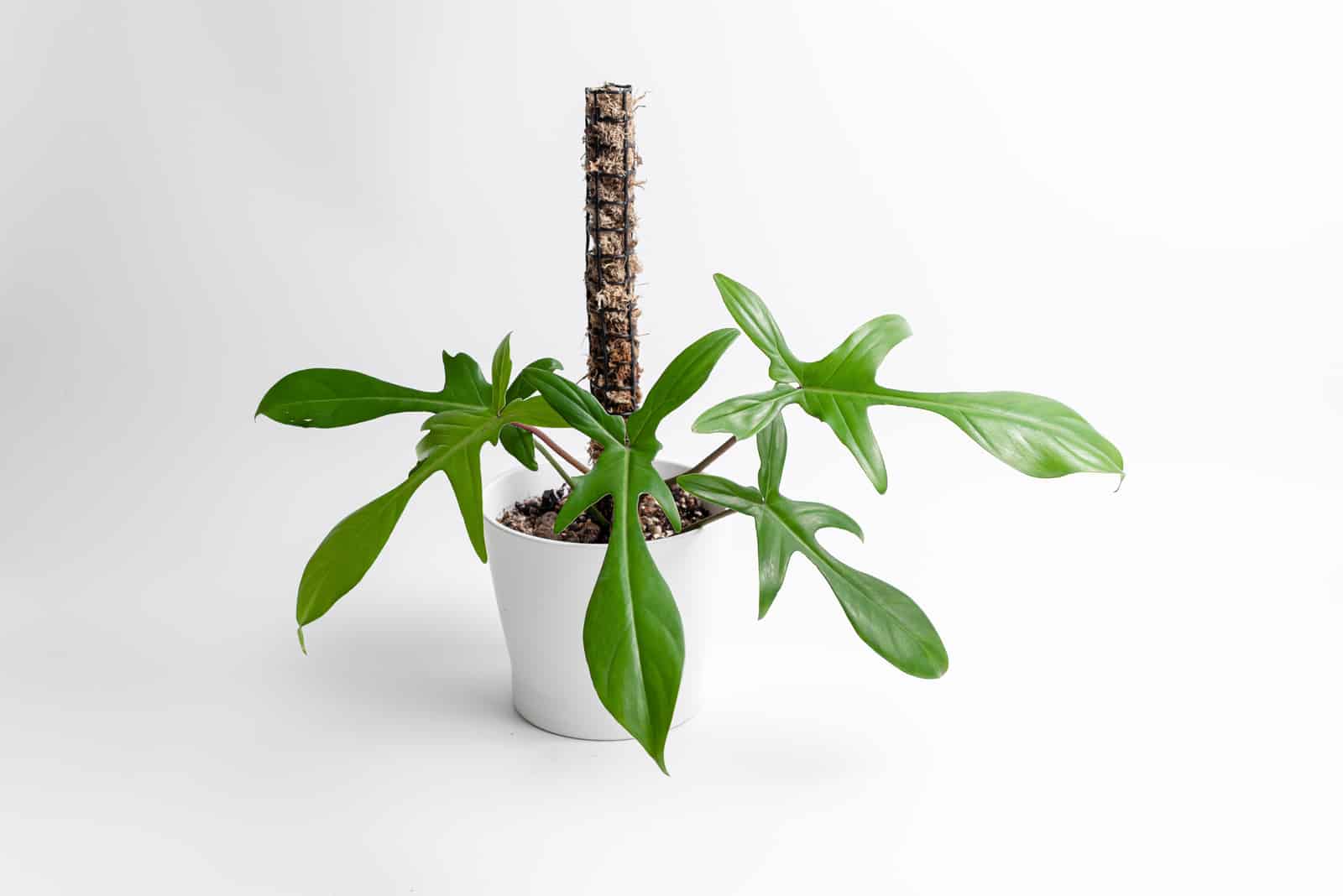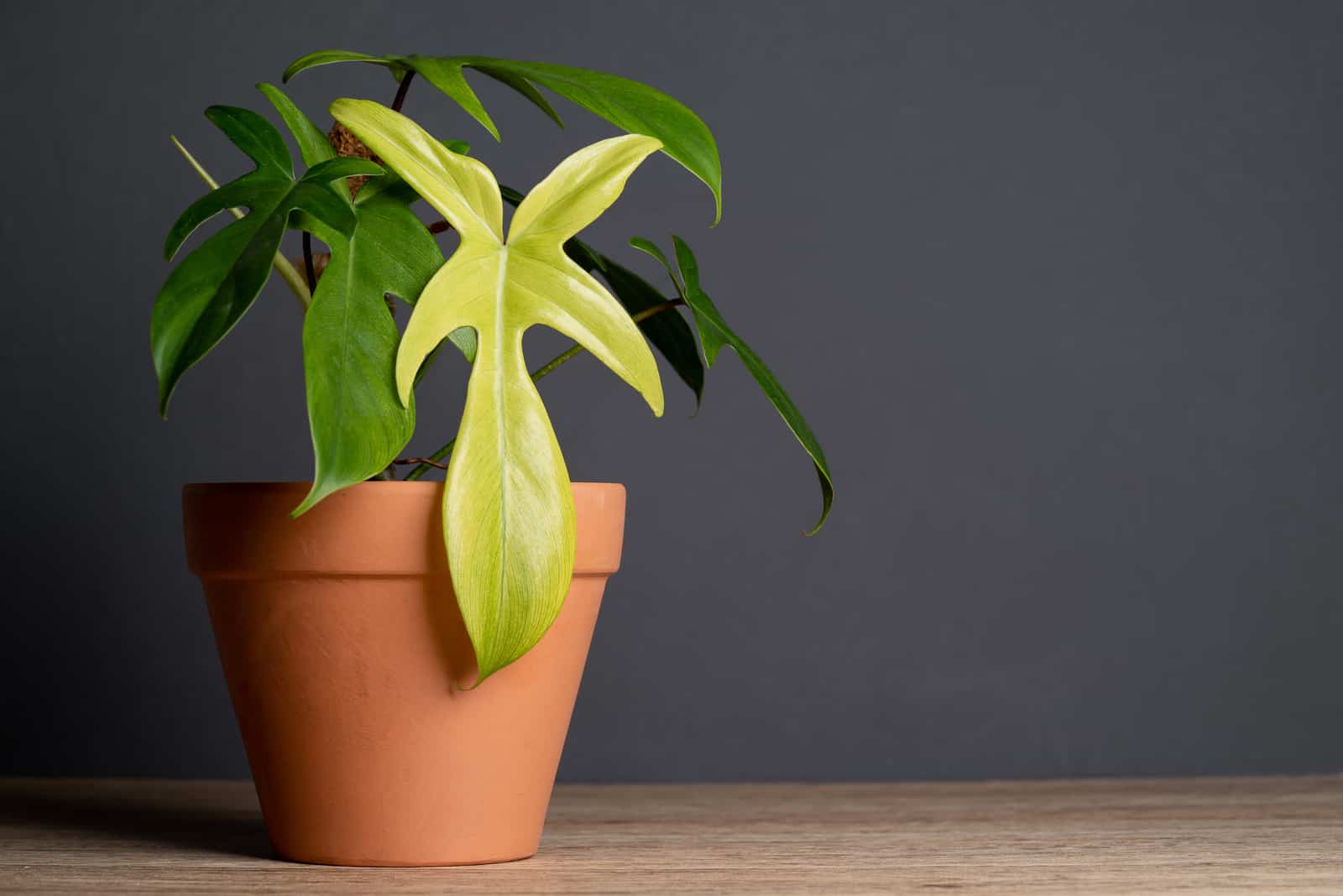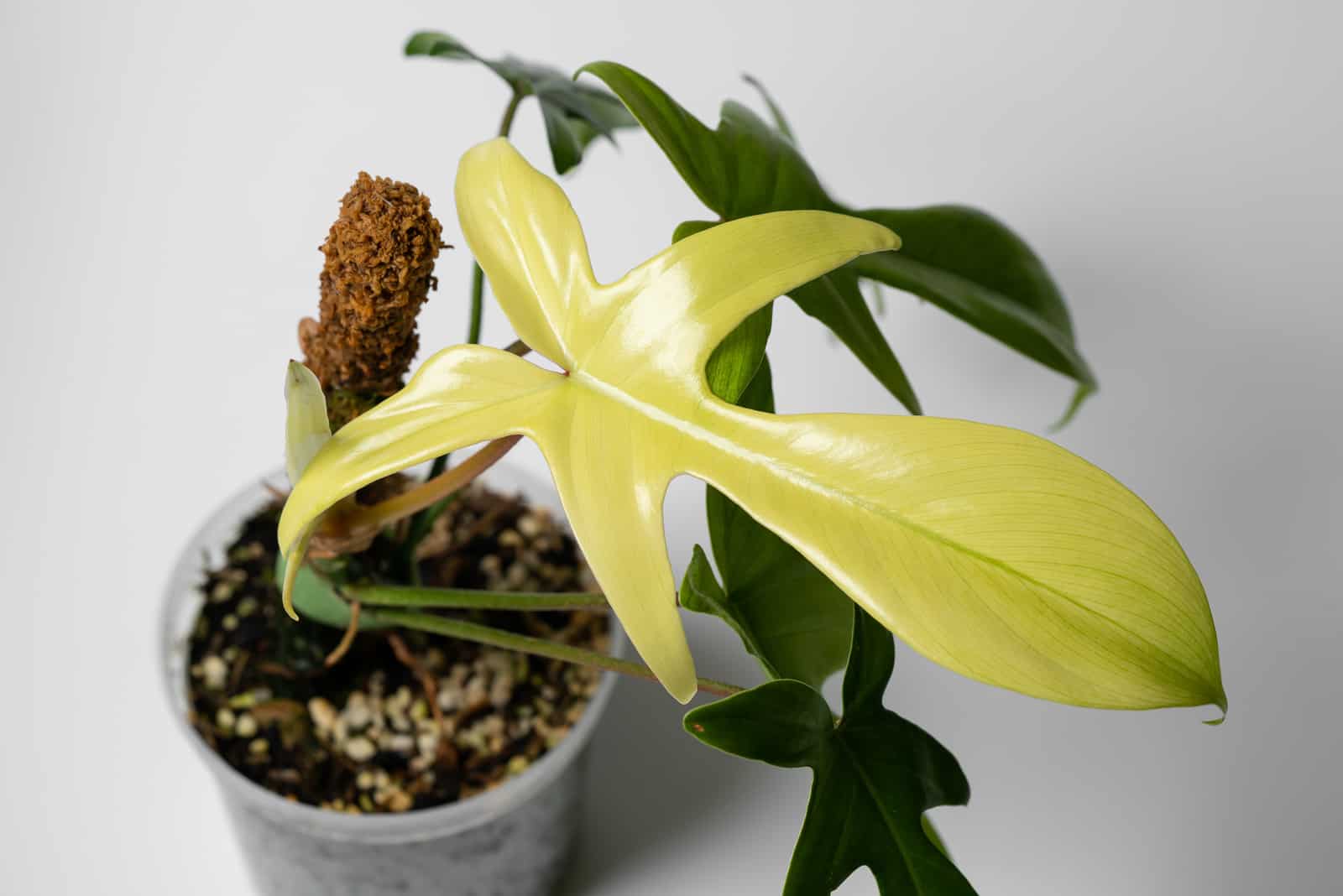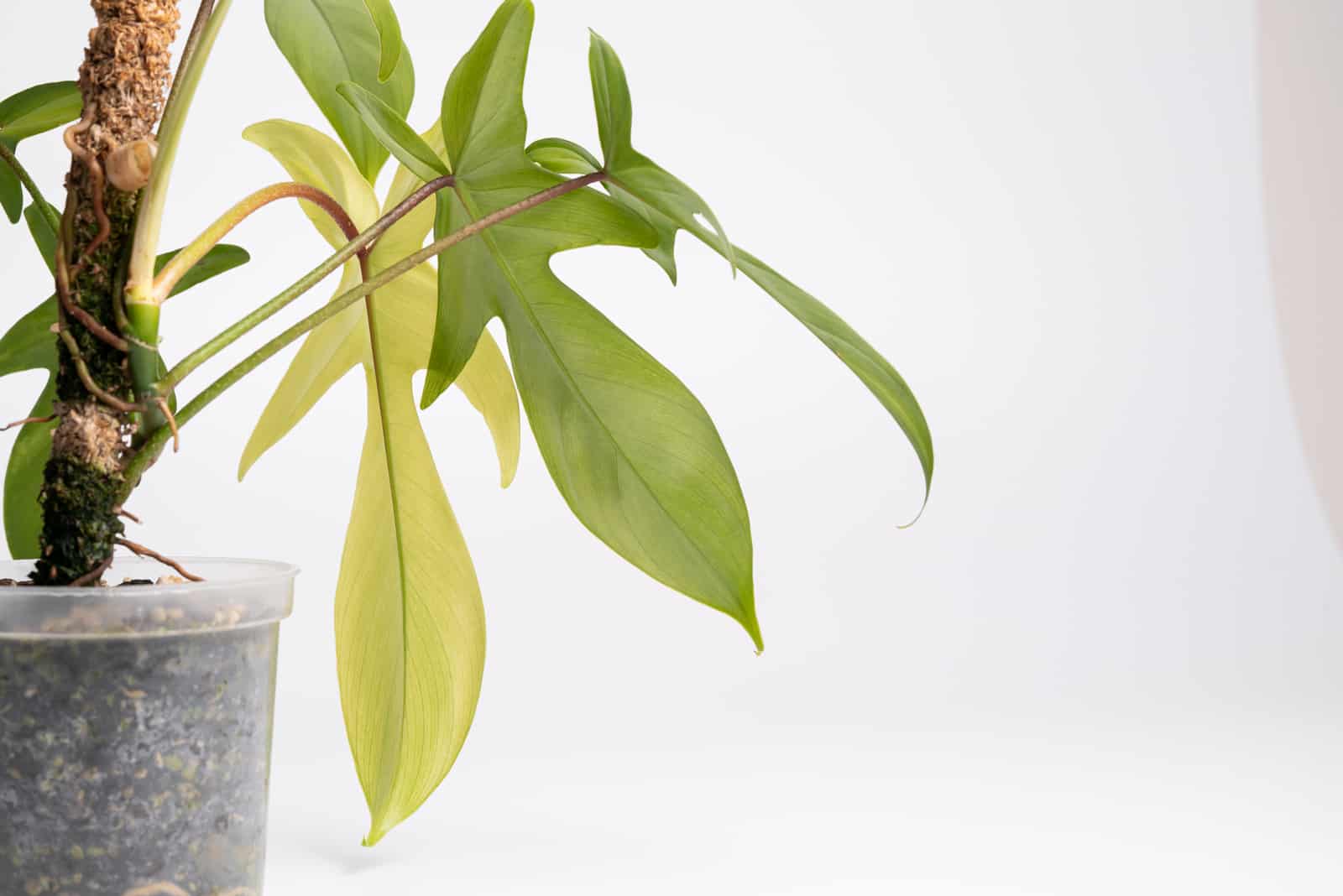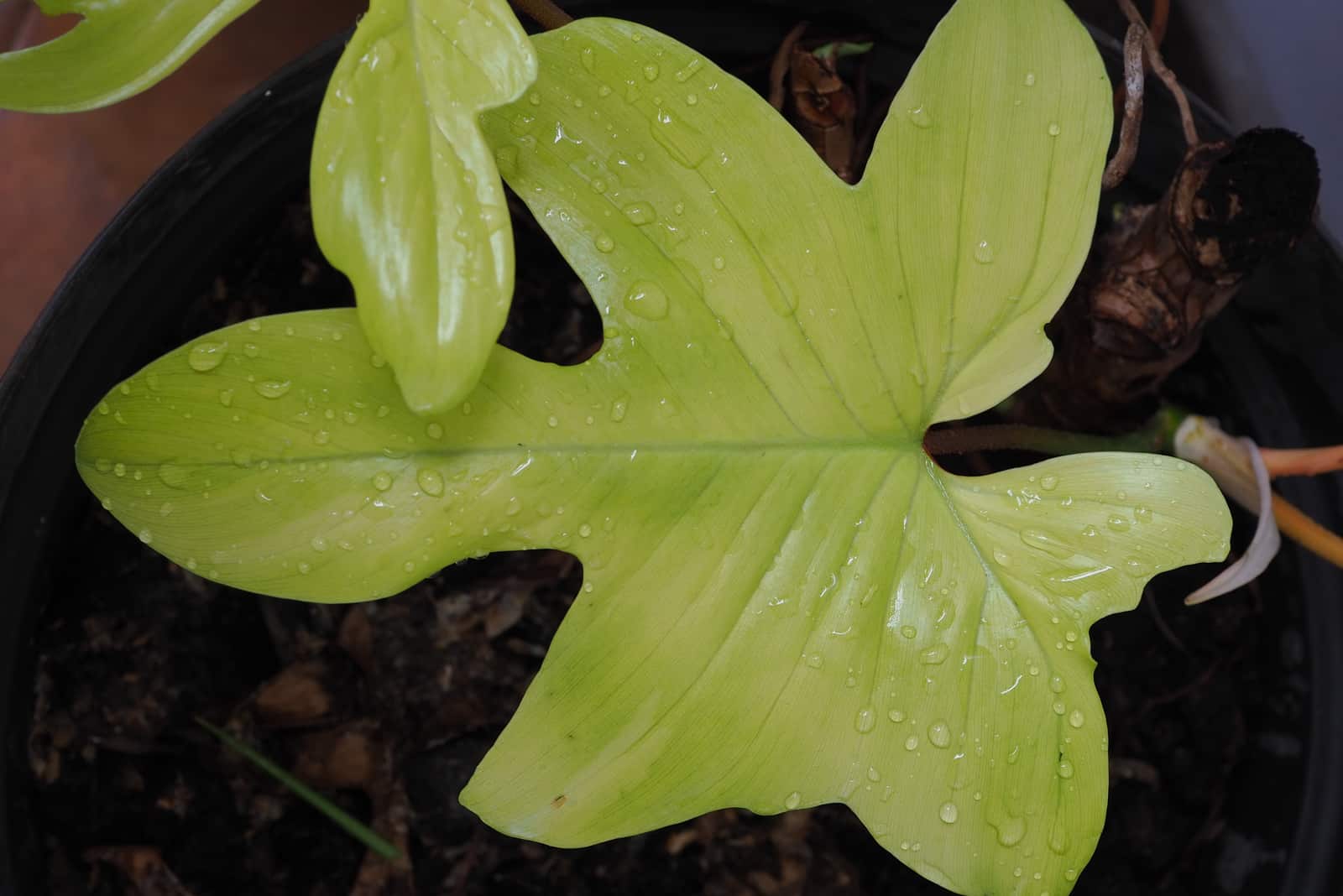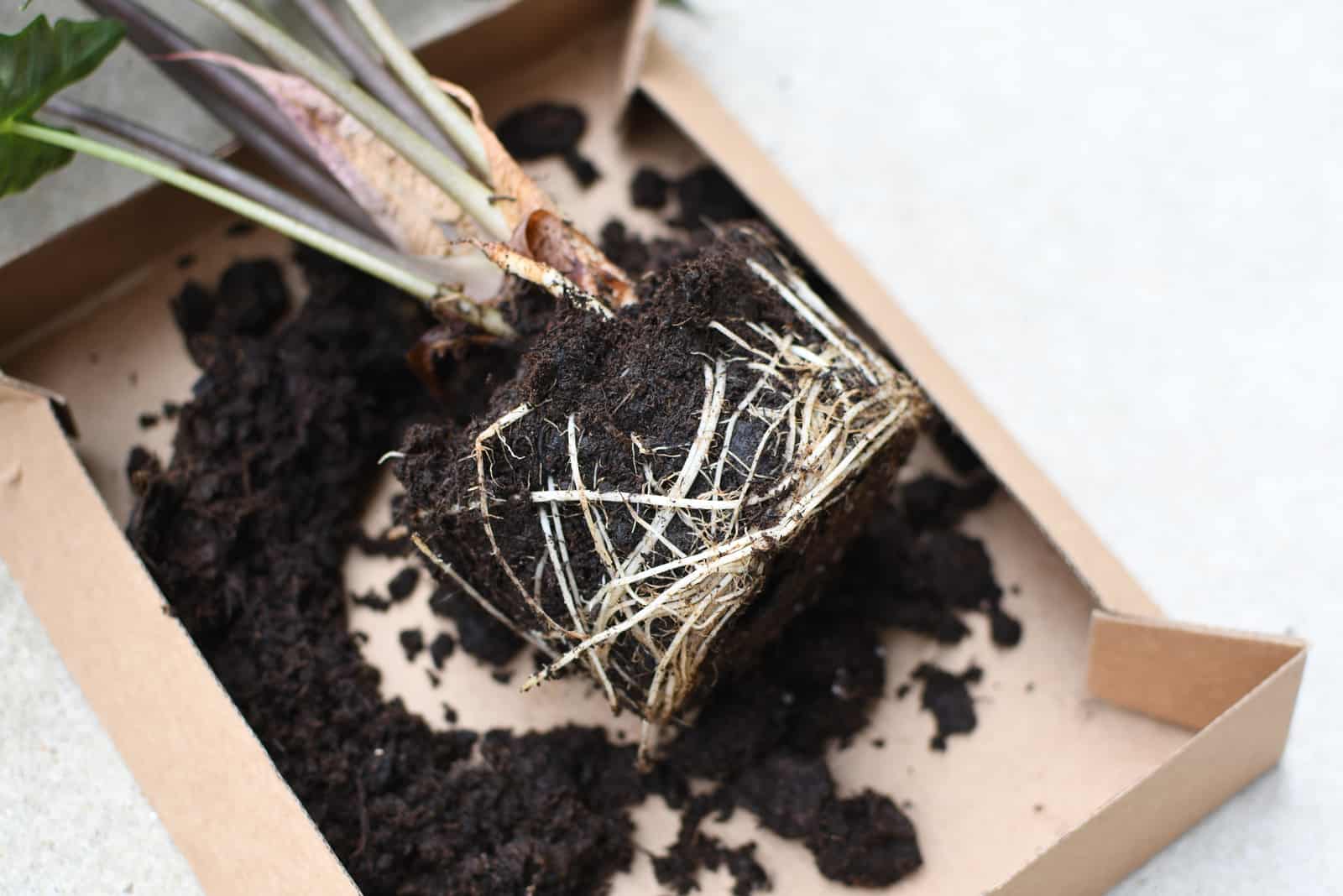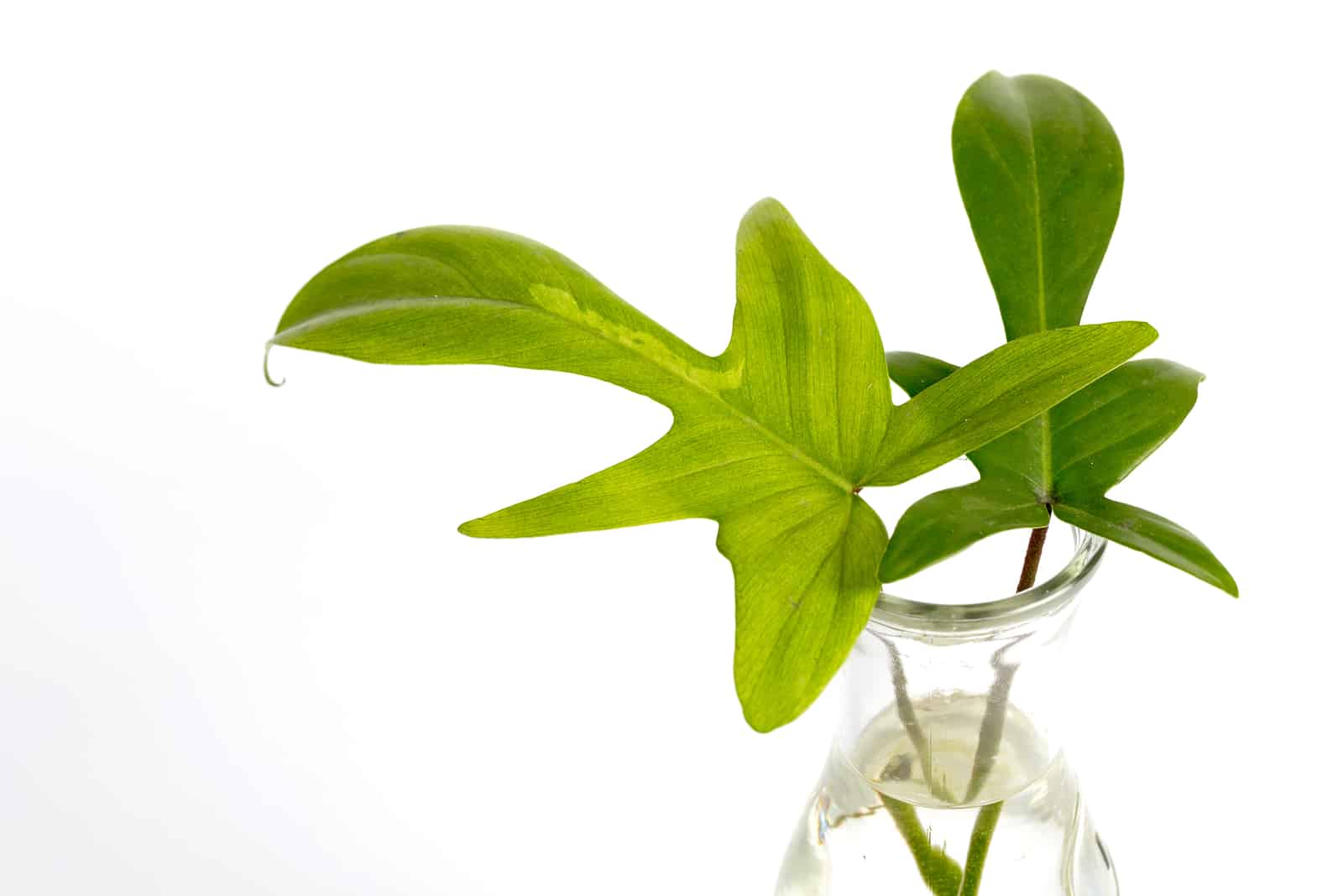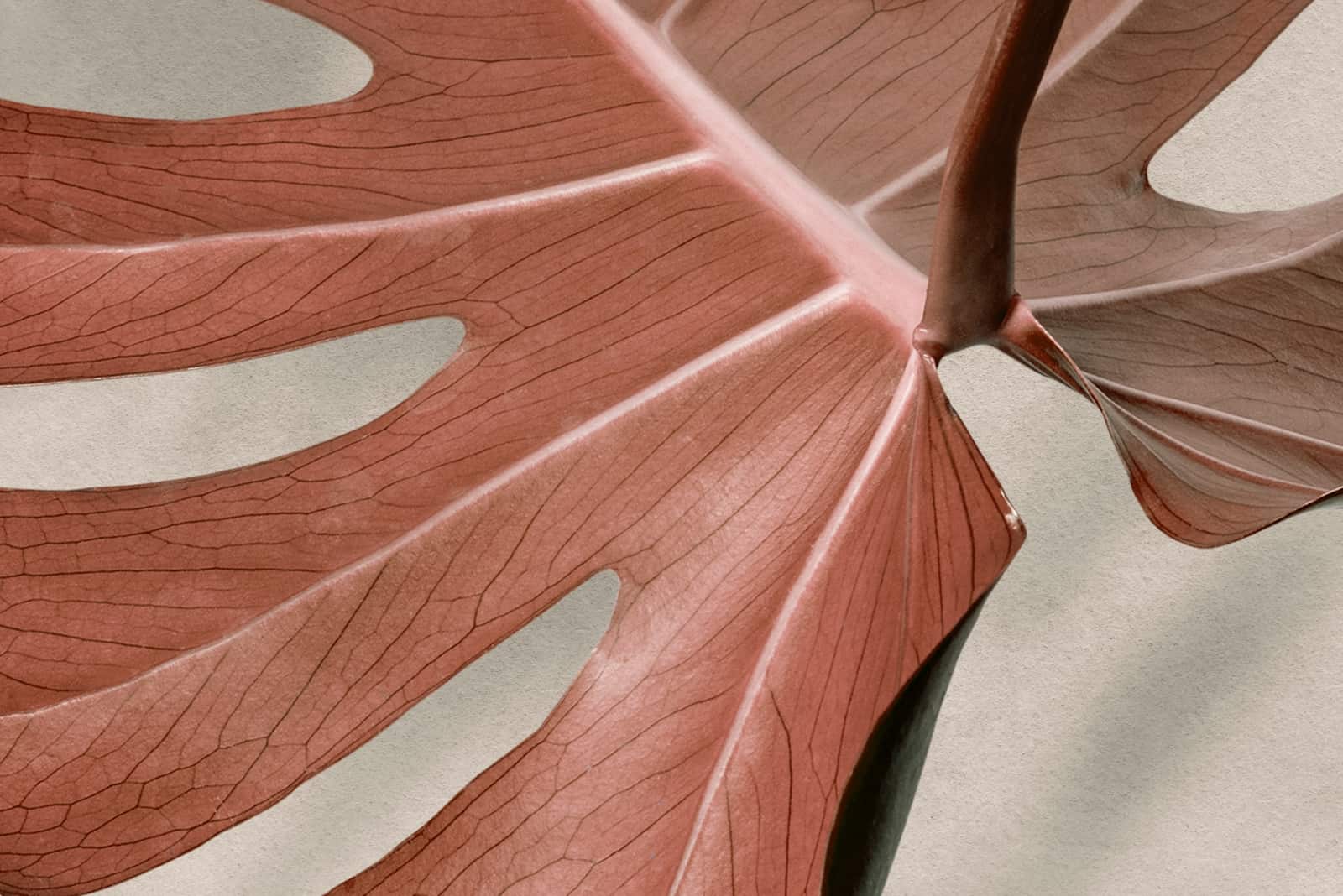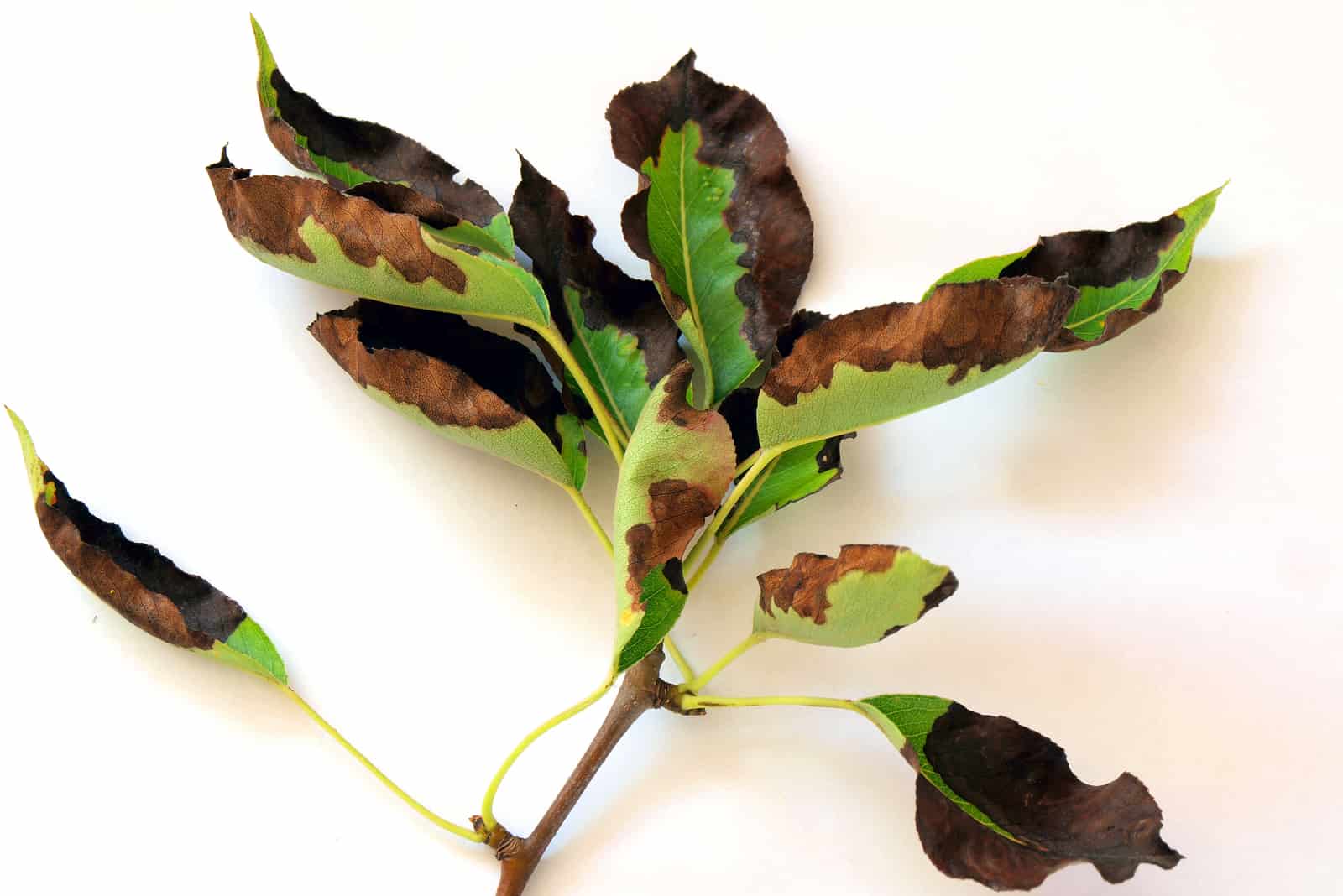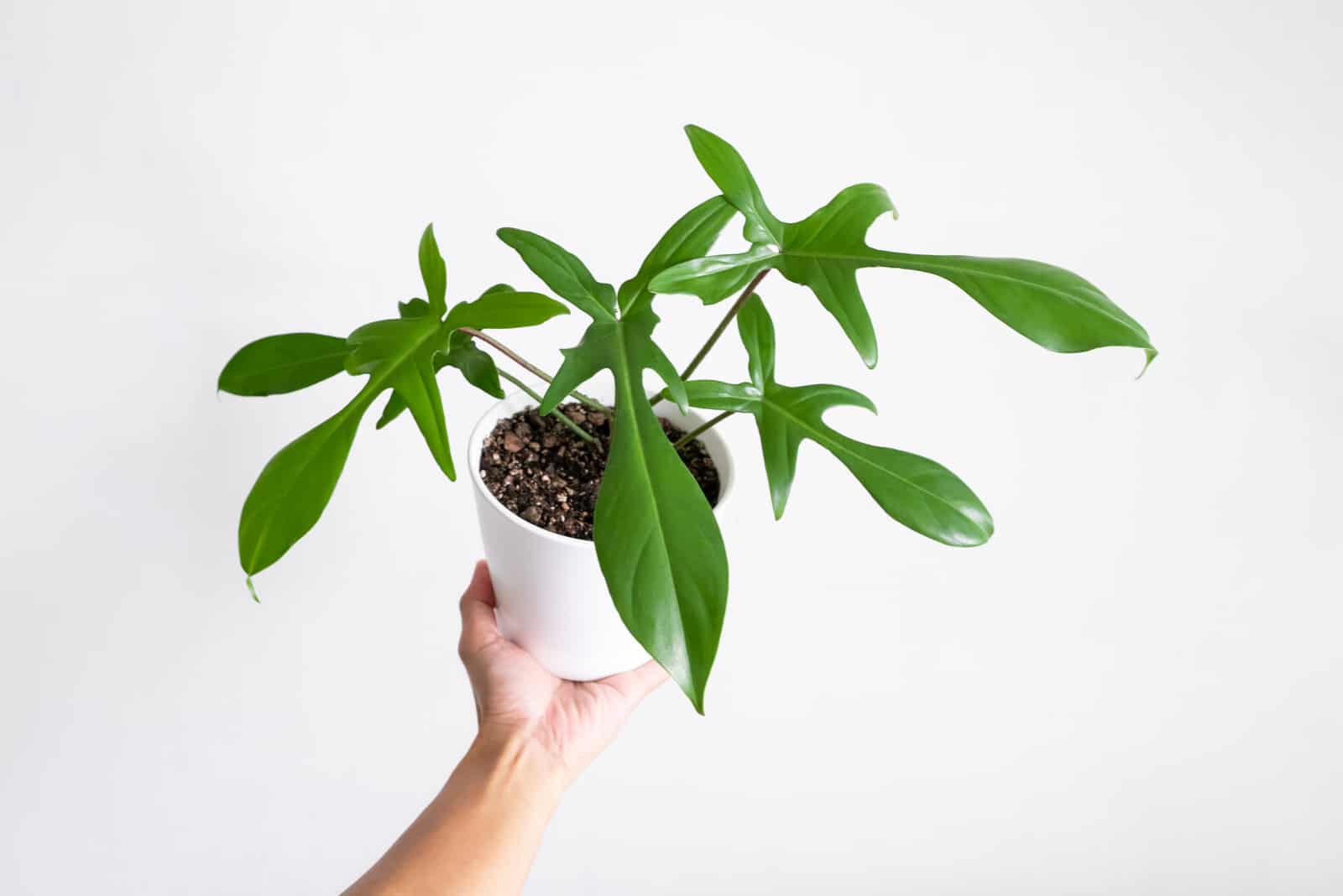The Philodendron Florida ghost is a rare plant that originates from South America. It’s actually a hybrid, which means the plant was made by crossing two different plants.
This plant grows small, white flowers in the beginning, hence the name ghost. This might be the only ghost you actually want in your room!
This hybrid has become quite popular recently, mainly because it is unique and easy to take care of.
If you want to know more about the Philodendron Florida ghost plant, read the rest of this article.
About The Philodendron Florida Ghost
The Philodendron Florida ghost is a member of the family Araceae, and was made by crossing the Philodendron Pedatum and Philodendron Squamiferum.
You could say that our little ghost is like a child to these two philodendrons!
The Philodendron Florida ghost inherited more features from the Philodendron Pedatum, which is why these two plants often get mistaken for one another.
It’s funny that every kid looks more like one parent than the other, even in plants!
Genes really are a mystery.
The Florida ghost is often mistaken for the Philodendron Florida Beauty; this plant really lives up to the “beauty” in its name!
The Philodendron Florida ghost begins to grow pale green and white leaves that get darker and variegated over time. Mature plants have completely dark green leaves.
The shape is not the same for all leaves, but they actually look like small, floating ghosts with their oval-shaped lobes.
Not only will this plant make your room look much more cool and lively, but it will also purify the air in it!
Seriously, this is pretty much the perfect houseplant.
Differences between Philodendron Florida ghost and Philodendron Pedatum
As these two plants often get confused for one another, you could end up with the wrong plant.
If you want the ghost in your room, pay attention to the structure and color!
The Philodendron Pedatum has large green leaves instead of the small white ones the Philodendron Florida ghost has, and it can grow taller too!
Although these are not flowering plants, they produce different spathes. The Philodendron Pedatum produces brown spathes, while the Philodendron Florida ghost produces purple spathes.
Philodendron Florida Ghost Care
Philodendrons are tropical plants, and the best way to make them happy is by mimicking their environment.
This means warm temperatures, higher humidity, and partial shade are all very important factors.
Read the Philodendron plant care guide below to discover everything you need to keep your ghost happy and healthy!
1. Soil
The Philodendron Florida Ghost prefers well-draining, organic soil.
As this is an aroid plant, you can buy aroid potting mix. If you have the time, you can even make your own potting soil mixture.
You can mix organic matter like perlite, sphagnum moss, peat moss, or orchid bark with universal potting mix – just make sure that everything is equally distributed.
If you have a monstera or pothos plant, you can use this potting mix as well. Trust me, they are going to love it!
2. Water
Your Philodendron Florida ghost does not need to be watered that often, mainly because it prefers having moderate soil that isn’t too dry or too wet.
If you give your ghost too much water, it can make the soil soggy and increase the risk of root rot.
And you definitely don’t want that to happen!
It is recommended to let the soil dry out completely before watering it again. You should always check whether the soil has dried before watering.
You can do this by using wooden chopsticks or your thumb, it’s totally up to you!
You should water your Philodendron Florida ghost plant once a week, and the ghost will be very happy indeed.
3. Light
Maybe some ghosts prefer darker areas – however, this ghost plant loves being in bright, indirect sunlight.
You should put your Philodendron Florida ghost near a window that doesn’t get direct sunlight, as this can burn the leaves and damage the overall health of your plant.
However, it does need a little bit of sun so it can perform photosynthesis – our suggestion would be to put it in a north-facing window.
If you decide to use grow lights instead, place your ghost plant about 5 inches away – this way it can get enough indirect light.
Grow lights should be used if you want the leaves to stay white.
However, make sure to turn them off every 12 hours as this plant is used to getting 12 hours of light followed by 12 hours in the dark.
4. Temperature
As the Philodendron Florida ghost is a tropical plant, it absolutely loves being in slightly warmer temperatures!
They thrive in temperatures ranging from 18 to 27 degrees Celsius – anything above would harm the plant.
You should know that this plant is not frost hardy, so you should definitely keep it inside during colder weather.
Avoid placing your plant in areas that usually get drafty, like near air conditioners or windows during winter.
5. Humidity
Philodendrons love the higher humidity levels found in their natural habitat.
Don’t worry, they can also adapt to lower levels of humidity, which makes them easier to grow as indoor plants.
The best humidity level for philodendrons is around 60%. This can be achieved if you buy a humidifier, create a pebble tray for your plant, or start misting.
It is quite easy to create a pebble tray of your own: simply put pebbles in a tray and fill it with water until it reaches the pebbles. Place the plant on the pebbles and you are good to go!
6. Fertilizers
The Philodendron Florida ghost is a slow grower, so it won’t need fertilizers that often.
It prefers balanced fertilizer rich in nitrogen. This will help your plant to grow healthy and strong.
It is recommended to use only half the usual amount of fertilizer, and you should do it once a month during the growing season.
Avoid fertilizing during the colder seasons as it can lead to chemical build up in the soil that may harm your plant.
7. Repotting
As it’s a slow-growing plant, you won’t have to repot your Philodendron Florida ghost regularly.
I only had to repot my little ghost after three years!
However, you should always check if the roots have come out of the drainage holes, as that is usually a sign for repotting.
The plant should always have enough space to breathe and grow.
8. Pruning
The last thing in this care guide is pruning.
Pruning is also done rarely for the Philodendron Florida ghost because this plant goes dormant and stops growing new leaves during the colder seasons.
At the beginning of the new growing season, you can remove any brown leaves that look damaged and unhealthy. This will help you keep your plant looking healthy and neat.
The Philodendron Florida ghost is a climber, so you should provide it with some kind of support like a moss pole. You can also have fun with it and provide any kind of structure to which the little roots of the plant can cling on to.
Philodendron Florida Ghost Propagation
If you want to propagate your Philodendron Florida ghost, read the instructions below to learn how to encourage the new growth of your little ghost.
1. Use appropriate equipment. As you are dealing with a rare plant, you should definitely be careful about what equipment you are using to avoid damaging both the mother plant and the new stem cutting. The best way is to use shears that have been sterilized.
2. Your stem cutting should contain at least two leaves and nodes that will sprout roots and promote new growth.
3. You can put the cutting either in water or soil, whichever is easier for you to maintain. I personally put the cuttings in water because I can see the little roots growing!
4. If you put it in water, then you should change it every three days. However, if you choose soil then you should put it in potting soil made with sphagnum moss, and water it frequently to retain moisture and encourage root growth.
5. Make sure that the cutting gets enough indirect sunlight and remains at an appropriate temperature.
6. Take the roots out of the water after they have grown about three inches long, and place them in a pot with a pre-prepared potting mix. If you have gone with soil, then place your new plant in the pot that is going to be its new home.
You can follow this video for more clearer instructions:
Air layering propagation
Propagation using the air layering method can be sometimes tricky, so often only experienced growers use this method.
It includes opening a wound on your plant with a sterilized knife.
1. The first thing you should do is cut the stem about 2 inches deep and use a toothpick to keep the wound open.
2. Then put wet sphagnum moss in and around the wound.
3. Use string to tie the moss and prevent it from falling off. Also put a plastic wrap around it, but keep it loose as if it gets too dry it will need moisture.
4. Prepare the pot and potting soil in the meantime.
5. You should notice new roots sprouting after three weeks, which means they are ready to be planted.
6. Use a knife to cut a few inches below and above the wounded area. Then remove everything carefully so you don’t damage the roots.
7. The last thing you need to do is plant your new baby ghost and put it in an appropriate environment.
Common Problems With The Philodendron Florida Ghost
Philodendrons are known for being very hardy, however they can encounter some issues.
Read on to learn about common problems which afflict the Philodendron Florida Ghost, and how to prevent them.
Leaves
Leaves are like a reflection of your plant’s health. If there are any problems with your plant, the leaves will be the first to react. The leaves Chico, they never lie!
Brown leaves
Oh no! Those wonderful white and pale green leaves are turning brown! Whatever will you do?
Well, if this has happened to your plant, the issue might be low humidity.
Although these ghost plants can tolerate lower levels of humidity, they still need some to survive!
If you notice that the little ghost leaves are beginning to look brown, then your plant might die and turn into an actual ghost – I am not sure whether there is a plant paradise though! 😀
So, don’t mess around and invest in a good humidifier!
Yellow leaves
Leaves turning yellow are usually a sign of overwatering.
Overwatering can lead to root rot and damage the overall health of your plant. So, you might want to slow down with watering if you see yellow leaves.
Always check if the soil has completely dried before watering and everything will be just fine.
Paler than usual
This plant has pale leaves when it is young, which is perfectly normal. However, the mature Philodendron Florida Ghost should have green leaves.
So, why do leaves start to look much paler than usual?
This might be an indicator that your plant is not getting enough nutrients!
If this has happened to your plant, make sure to use nitrogen-rich fertilizer more often.
Diseases & pests
Unfortunately, your ghost plant can’t scare off those annoying bugs and pests by itself!
Mealybugs and aphids often invade this type of plant because they want to steal its delicious nutrients for themselves.
You can get rid of these little thieves by spraying an organic solution with neem oil on your plant, or you can use insecticides if you prefer.
Fire blight is a common disease often found in Philodendron Florida ghost plants, which is caused by the Erwinia amylovora bacteria.
This can lead to the leaves turning brown and crispy, which then leads to the whole branch dying, and eventually affects the overall health of your plant.
However, this can be prevented by immediately removing any leaves you notice with spots on their surfaces.
Cut the leaves or branches with sterilized shears or scissors and lay off with the fertilizers – you might have been inadvertently feeding the bacteria this whole time.
FAQs About Philodendron Florida Ghost Plant
1. What is the difference between the Philodendron Florida ghost and Philodendron Florida ghost mint?
The difference is actually in the color of their leaves. While they are the same plant, meaning they have the same features and requirements, they differ in the color of their leaves. The Florida ghost mint – you guessed it – has a minty color instead of white, which makes them even more aesthetically pleasing.
If you love pastels, then I would suggest you get a Philodendron Florida ghost mint plant to match your vibes.
2. Is the Philodendron Florida ghost toxic?
Sadly, yes. Philodendrons contain calcium oxalate crystals, which are toxic substances that can cause nausea and vomiting if ingested.
This means you should definitely keep your kids and pets away from it.
If you want to know more about Philodendron poisoning and control, click here.
3. Can I buy a Philodendron Florida ghost online?
Yes. You can find them on Etsy and Amazon. The prices are usually about 40 USD, but you can look for sales too!
4. What type of pot should I buy?
The material of the pot is your personal choice. You can choose either plastic, ceramic, terracotta, or clay pots.
Make sure that it has drainage holes and that the diameter of the pot is around 35 or 40 cm.
5. Is the Philodendron Florida Ghost variegated?
The answer is no, they are not variegated. However, although the Philodendron Florida beauty is practically the same plant, it appears to have some variegations during its lifespan.
Conclusion
If you are looking for a beautiful, tropical plant that will make your room look more luxurious and also purify the air in it at the same time, then the Philodendron Florida ghost might be the perfect plant for you!
But don’t be afraid, those white ghost leaves are adorable!
Or, if you are into scary stuff, you can always brag about having a ghost in your room.
It’s quite easy to take care of, and as this hybrid plant has become relatively popular among plant lovers, you may even have noticed it in a house tour video of your favorite artist or youtuber.
You can also get creative and provide this climber plant something unique to climb on, like a dress frame trellis, which is often used for decorating plants.
Whatever you decide, it is totally up to you – just make sure to take good care of it!
Until next time!
Like this post? Share or pin it for later!

